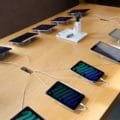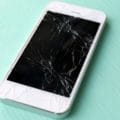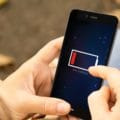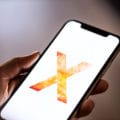In a time where cell phones have become expansions of ourselves, an error like a lethargic touchscreen can disturb our everyday beat fundamentally. Touchscreens are the essential method of connection with our cell phones, making any issue with them a minor burden as well as a significant barricade in our efficiency, correspondence, and relaxation exercises. From a slight slack to a totally lethargic screen, the scope of touch issues changes, however the disappointment stays steady. In any case, understanding the main drivers of these issues and knowing how to address them can essentially mitigate the pressure in question. This extensive aid means to demystify the most common way of diagnosing and fixing cell phone contact issues, guaranteeing you’re prepared to take your device back to its ideal state.
Common Causes of Touchscreen Problems
Many different causes that may be either hardware or software-related can cause touchscreen problems on smartphones. One of the common causes is physical damage, like cracks or scratches on the screen which prevent the screen from reacting due to its sensitivity. Sometimes the failure of such a device begins with minor damage which can lead to the malfunctioning of the touchscreen.
Extreme temperature conditions, humidity or water presence may also impact performance and sometimes make the screen either showing this or that display or being unresponsive. With respect to the software, bugs, glitches, and a corrupted operating system can affect the touch sensitivity.
Old apps or software that are not compatible may also cause the screen to freeze or fail to register the touch accurately. Exceeding the capacity of the device’s memory to carry many running apps can also be a cause of slowness in the touchscreen’s responsiveness. Recognizing these main causes is the initial process of diagnosing and dealing with touchscreen malfunctions, therefore, users would be enabled to take the right action to restore the device’s performance.
Initial Diagnostics and Quick Fixes
In order to choose the most proper solutions it is advised to do some diagnostics and quick fixes first so that touchscreen problems could be resolved. Commence the process by rebooting your device to terminate software errors temporarily that may be hindering the screen. Use a soft clean cloth free from lint to wipe the touchscreen so that any dirt, grease, or residues are removed, allowing the touch sensitivity to work optimally. A good step is also removing any screen protectors or cases that are misaligned and may be causing the distortion in the service provider.
Adapting the sensitivity of the screen, if provided, is helpful when touch recognition seems not to work well. If the issues are more persistent, factory reset (having backing up existing data) can address more complex software problems, and those result in the device restoring to its original settings, hence fixing the touch screen malfunction. At this stage of the problem, these steps are very important as they help begin the process of dealing with common touchscreen issues without referring the problems to professional repair services first.
Advanced Troubleshooting Techniques
Advanced fixes for touchscreen problems go even deeper into the troubleshooting process than the typical DIY guides, offering workarounds for issues that a regular method will not solve on its own, thereby negating that you would have to take your phone to a repair shop immediately. An example of this is the factory reset, which takes the device back to its original settings and fixes the problems that are due to the apps or system.
On the other hand, before changing to the new system, you must back it up, because it makes the device empty. One of the other methods includes booting the device in Safe Mode which is a kind of mode that disables all third party apps and, therefore, users can identify if the problem is a result of a recent installation of an app.
Also, desktop users should check and install any available software updates as they can include bug fixes for the known problems that affect touch screen usability. For some devices that support it, recalibrating the touchscreen also can be helpful. If all these attempts haven’t helped the touchscreen turn unresponsive it might mean a hardware issue calling for the phone repairing services in Richmond.
When to Seek Professional Help
It is highly advisable to reach out for professional assistance when even the advanced troubleshooting ideas fail to recover a non-responsive touchscreen. Signs that it is time to get help from a repair expert in Richmond may be the persistent unanswered ness, physical damage to the screen, or if the device has been exposed to the liquids.
Organized in this way, the experts do have the widgets, parts, and expertise to diagnose and repair the issues which are not universally accessible to the layperson, that is, replacing a faulty touchscreen device or fixing the internal components.
Electronic devices such as smartphone repair service can be done by a qualified technician, giving an overview of the damage state and the needed repairs for the next step. Choosing to repair your device with a professional instead will be the answer to possible savings (time, money) in the future because it makes sure that the repair is done right and the device is restored to its proper condition.
Preventive Measures and Best Practices
Adopt a Screen Protector: Think of it as your device’s knight in shining armor, guarding against scratches, smudges, and the dreaded impact of your klutz moments.
Embrace the Cleanliness Cult: Your screen is not a canvas for finger painting. Regular cleaning with a soft, microfiber cloth can prevent the build-up of oils, dirt, and germs that love to mess with your screen’s responsiveness.
No Sunbathing: Your phone hates extreme tanning sessions as much as you hate Monday mornings. Keep it cool, literally, to avoid overheating and screen damage.
Finger Gymnastics: Avoid using your touchscreen with nails, styluses not designed for your screen, or while wearing chainmail gloves. Your screen appreciates gentle, bare finger touches.
Backup Like There’s No Tomorrow: Regular backups save lives—or at least data, which is pretty much the same thing in today’s world. Don’t wait for a disaster to remember the cloud exists.
Software Updates Are Your Friend: They’re like health check-ups for your device. Regular updates can fix bugs that affect touchscreen functionality, keeping your device running smoothly.
Mindful Handling: Treat your device like a delicate pastry. Avoid dropping it, sitting on it, or using it as a coaster. A happy device is a responsive one.
Cases for Days: Invest in a good quality case. It’s the superhero cape your device deserves, offering protection from drops, spills, and the evil forces of gravity.
Final Words
An ounce of prevention is worth a pound of cure, especially in the digital world. Keep your touchscreen happy, and it will return the favor. Got a touchscreen tragedy on your hands? Contact us for a rescue mission.









